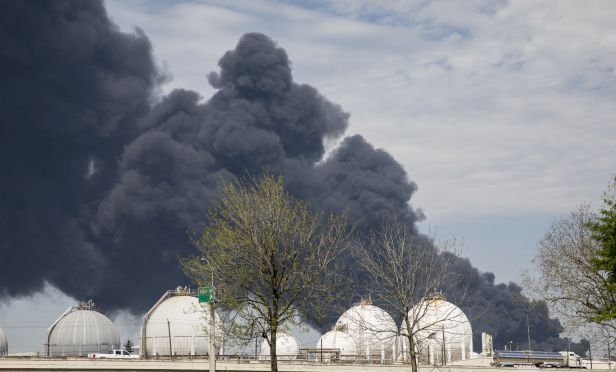 A plume of smoke rises in the air following a fire at the Intercontinental Terminals Co (ITC) petrochemical storage site in City, Texas, on Tuesday, March 19, 2019. (Photo: Scott Dalton/Bloomberg)
A plume of smoke rises in the air following a fire at the Intercontinental Terminals Co (ITC) petrochemical storage site in City, Texas, on Tuesday, March 19, 2019. (Photo: Scott Dalton/Bloomberg)
Firefighters confronted with the worst Gulf Coast industrial disaster in 14 years had to call on outside sources to augment their supply of the special foam required to extinguish chemical blazes.
|Proper equipment, personnel in place?
Intercontinental Terminal Co. confirmed it appealed to other companies for foam during the fire that erupted on March 17 and ravaged its chemical storage complex in Houston's eastern suburbs for four days. Almost two weeks after the calamity began, local officials are questioning whether ITC had the proper equipment and personnel in place to handle such an event.
Recommended For You
Want to continue reading?
Become a Free PropertyCasualty360 Digital Reader
Your access to unlimited PropertyCasualty360 content isn’t changing.
Once you are an ALM digital member, you’ll receive:
- Breaking insurance news and analysis, on-site and via our newsletters and custom alerts
- Weekly Insurance Speak podcast featuring exclusive interviews with industry leaders
- Educational webcasts, white papers, and ebooks from industry thought leaders
- Critical converage of the employee benefits and financial advisory markets on our other ALM sites, BenefitsPRO and ThinkAdvisor
Already have an account? Sign In Now
© 2025 ALM Global, LLC, All Rights Reserved. Request academic re-use from www.copyright.com. All other uses, submit a request to [email protected]. For more information visit Asset & Logo Licensing.








